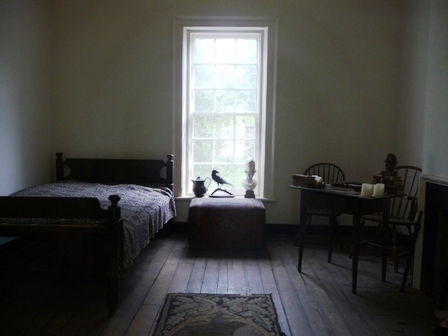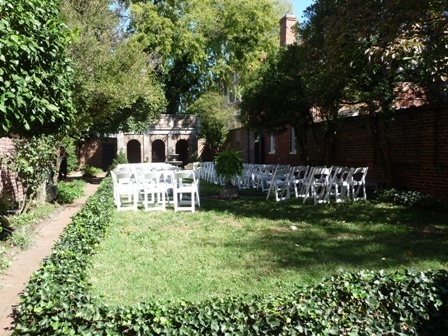Joni Rendon's Blog, page 13
November 30, 2010
Happy B-day, Mark Twain
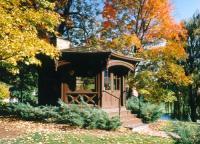 To commemorate the 175th anniversary of Mark Twain's birth on November 30, 1835, NPR's Tom Vitale set out for Elmira, New York, in the Finger Lakes, where the writer spent many summers on his in-laws' Quarry Farm. Click here to follow along on Vitale's literary adventure and to find out some neat details about Twain's writing life–like the fact that his octagon-shaped writing studio was modeled after the pilot house on a riverboat, emulating Twain's former profession (one he claimed to love "far better than any I have followed since").
To commemorate the 175th anniversary of Mark Twain's birth on November 30, 1835, NPR's Tom Vitale set out for Elmira, New York, in the Finger Lakes, where the writer spent many summers on his in-laws' Quarry Farm. Click here to follow along on Vitale's literary adventure and to find out some neat details about Twain's writing life–like the fact that his octagon-shaped writing studio was modeled after the pilot house on a riverboat, emulating Twain's former profession (one he claimed to love "far better than any I have followed since").
Check out some of our previous posts about Mark Twain:
Twain's Feast
Touting Mark Twain in 2010
Mark Twain's Island Paradise
Mark Twain's Nicaragua








November 20, 2010
Cast Your Vote
Four literary landmarks are in the running to receive a "Save Our Sites" grant from Tourism Cares, a nonprofit organization dedicated to preserving natural, cultural, and historic sites in the U.S. and abroad.
To cast your vote—and to find out what each place has planned for the grant money—click here. Voting is open until Friday, December 3rd.
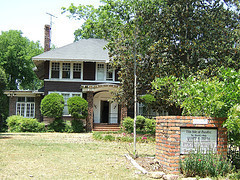 F. Scott and Zelda Fitzgerald Museum
F. Scott and Zelda Fitzgerald Museum
Montgomery, Alabama
The Fitzgeralds settled in this Montgomery house after returning from Europe in 1931, and worked on their respective novels — Scott on Tender is the Night and Zelda on the semi-autobiographical Save Me the Waltz. This is the only museum in the world devoted to the Jazz Age pair.
 Harriet Beecher Stowe Center
Harriet Beecher Stowe Center
Hartford, Connecticut
This Gothic Revival-style house was the last residence of the author whose anti-slavery novel, Uncle Tom's Cabin, attracted the attention of even President Lincoln. The Nook Farm neighborhood attracted other literary notables, too. Stowe's famous neighbor was Mark Twain.
 Poe Cottage
Poe Cottage
Bronx, New York
This modest (c. 1812) cottage, where Poe suffered hard times both personally and professionally, is the only building from the time period to escape the urban sprawl that overtook the once-rural area north of New York City.
 Mark Twain Boyhood Home & Museum
Mark Twain Boyhood Home & Museum
Hannibal, Missouri
The museum complex includes a number of buildings, including the raconteur's boyhood home (left) and the "Becky Thatcher House" (residence of Laura Hawkins, the inspiration for the character in The Adventures of Tom Sawyer), which is currently undergoing restoration.
[Stowe House photo ©Harriet Beecher Stowe Center]








November 13, 2010
Happy B-day, Robert Louis Stevenson
160 years ago today, Robert Louis Stevenson made his debut into the world in Edinburgh, Scotland, growing up to pen such tales as Treasure Island, Kidnapped, and The Strange Case of Dr. Jekyll and Mr. Hyde. A lesser-known work is his 1879 travel narrative Travels with a Donkey in the Cévennes, which later inspired the title for John Steinbeck's road trip memoir Travels with Charley. Even Google is getting in on the act with an adventure-themed graphic paying homage to Stevenson's tales on their home page today.
There are three stateside museums dedicated to the scribe – the Robert Louis Stevenson Silverado Museum in the Napa Valley, the Stevenson House in Monterey, and a Memorial Cottage in New York State's Adirondack Mountains – and he's also featured at the Writers' Museum in Edinburgh, Scotland.
Feeling adventurous? Here are four lesser-known places to follow in Stevenson's footsteps:
 Robert Louis Stevenson House, Edinburgh, Scotland
Robert Louis Stevenson House, Edinburgh, Scotland
The writer's childhood home (left) at 17 Herriot Row in Edinburgh, a townhouse located along Queen Street Gardens, is a private residence owned by the Macfie family. They occasionally accept overnight lodgers, and you can also arrange to have lunch or tea at the house.
Point Lobos State Reserve, Point Lobos, California
Legend has it that Stevenson used the rugged coastal landscape around Point Lobos as a model for the terrain in Treasure Island.
Robert Louis Stevenson State Park, St. Helena, California
Recently-married and cash-strapped, Stevenson and his wife, Fanny, took up residence in Silverado, an abandoned mining town on the slopes of Mount St. Helena in northern California. The site of the ramshackle bungalow where they lived for two months is part of his namesake state park, and a marker identifies its location.
Robert Louis Stevenson Museum, Apia, Samoa
After braving the Adirondacks during the dead of winter (his ink sometimes froze in its pot) seeking an open-air cure for his tuberculosis, Stevenson headed for the South Seas, probably to thaw out. His final residence is now a museum in Apia, Samoa, where his gravesite overlooks the sea.








November 10, 2010
Alexandre Dumas: Imagination at Work
 Alexandre Dumas' fanciful country retreat outside Paris is worthy of its imaginative literary namesake, The Count of Monte-Cristo. Getting to the Château de Monte-Cristo made me feel like I was in an episode of The Amazing Race. I took the Metro in Paris, then a commuter train to the suburbs, followed by a bus ride. Finding the château is part of the fun.
Alexandre Dumas' fanciful country retreat outside Paris is worthy of its imaginative literary namesake, The Count of Monte-Cristo. Getting to the Château de Monte-Cristo made me feel like I was in an episode of The Amazing Race. I took the Metro in Paris, then a commuter train to the suburbs, followed by a bus ride. Finding the château is part of the fun.
To reach Dumas' retreat, you walk along a wooded path, through man-made caves, and  past a waterfall. Each room in the château presents a different facet of Dumas' life, from his affinity for gourmet cooking to his exotic travels. Also on the property is a stone tower Dumas had built for his office, which he named Château d'If after the prison in The Count of Monte-Cristo.
past a waterfall. Each room in the château presents a different facet of Dumas' life, from his affinity for gourmet cooking to his exotic travels. Also on the property is a stone tower Dumas had built for his office, which he named Château d'If after the prison in The Count of Monte-Cristo.
Take an armchair visit through the château, and learn about its colorful history, in my article on France Today magazine's website. –Shannon McKenna Schmidt








November 3, 2010
Fact Meets Fiction in Mankato, Minnesota
Written in the 1940s and set at the turn of the 20th century, Maud Hart Lovelace's novels featuring Betsy Ray, her best friend, Tacy, and other characters in Deep Valley, Minnesota, have stood the test of time. Last year, in large part due to the urging of Harper Perennial associate publisher Jennifer Hart (aka Book Club Girl), a lifelong Lovelace fan, six of the Betsy-Tacy stories were brought back into print, including Heaven to Betsy and Betsy in Spite of Herself. And two more books in the Deep Valley series were recently reissued: Emily of Deep Valley and Carney's House Party/Winona's Pony Cart.
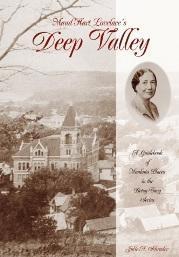 The novels, written for young adults, have garnered admirers of all ages. "Visiting Betsy's world is such an absolute pleasure," wrote author Meg Cabot—who first read the books as an adult—in The Wall Street Journal. In Mankato, the model for Deep Valley, it's possible to experience the real-life places that inspired Lovelace's fictional world.
The novels, written for young adults, have garnered admirers of all ages. "Visiting Betsy's world is such an absolute pleasure," wrote author Meg Cabot—who first read the books as an adult—in The Wall Street Journal. In Mankato, the model for Deep Valley, it's possible to experience the real-life places that inspired Lovelace's fictional world.
We spoke with Julie Schrader, the author of Maud Hart Lovelace's Deep Valley: A Guidebook of Mankato Places in the Betsy-Tacy Series, to find out more about the Minnesota town and what's there for literary travelers.
NovelDestinations.com: Maud Hart Lovelace's novels have some high-profile fans, among them Nora Ephron, Judy Blume, and Meg Cabot, who visited Mankato last year. Have the books been drawing literary travelers to town since their publication in the 1940s, or is it a more recent phenomenon?.
Julie Schrader: Lovelace fans have been visiting Mankato for many years, although the numbers have greatly increased in most recent years. The reason for increased attention has been the re-issue of the books and the Betsy-Tacy Society's acquisition and restoration of the Betsy-Tacy houses on Center Street.
Readers are always thrilled to learn that there really WAS a Betsy and Tacy and that Deep Valley really does exist. For younger readers it creates an excitement for reading and for older readers it creates a renewed interest in the stories they remember from their childhood.
In 1961 the American Association of University Women organized Betsy-Tacy Days in Mankato. This weekend celebration not only brought together Maud Hart Lovelace and several of her childhood friends who were characters in the books, but also featured the first organized Betsy-Tacy neighborhood walking tour. There have also been five Betsy-Tacy Conventions held in Mankato since 1992 that have brought many fans to town and plans are to hold a convention in the summer of 2012.
ND: For those who have never before been to Mankato, what should be their first stop?
JS: Your first stop has to be the Betsy-Tacy houses located at 332 and 333 Center Street where the books begin. Until the Betsy-Tacy Society (established in 1990) purchased Maud Hart Lovelace's (Betsy) and Frances Kenney Kirch's(Tacy) childhood homes, fans could only see these houses from outside and imagine what they would have looked like in the early 1900s when the author and her best friend lived there.
The Betsy-Tacy houses have been restored to their 1900 period charm and are open to the public. When you visit these houses you will feel like you stepped in to the pages of the Betsy-Tacy books. In Betsy's house (above left) you will see the kitchen where Betsy, Tacy and Tib made "everything pudding" and the front parlor where Mrs. Ray played the piano for Betsy's birthday party. Visitors can sit on the bench where Betsy and Tacy had their picnic suppers or view the bench from Tacy's beautiful bow window—what Maud called the "heart of the Kelly house."
The Betsy-Tacy houses were designated literary landmarks in May 2010. Tacy's house is the gift shop and interpretive center. Be sure to pick up a full color, detailed map of the many other Betsy-Tacy sites in Mankato (Deep Valley).
ND: What is your favorite literary landmark in town?
JS: My favorite landmark is of course the Betsy-Tacy houses and the bench, but after you visit them, you will want to see Tib's "chocolate-colored house" which looks just as so many of us first imagined it while reading the books. You can also see the Carnegie Library, where Betsy's (Maud's) love of reading really grew and which figures prominently in Betsy and Tacy Go Downtown. And Carney's house is also still standing, and you can even see the sleeping porch!
ND: Betsy-Tacy house tours are given weekly year round, but for those planning future trips, what time of year do you recommend they visit Mankato?
JS: Any time of the year is beautiful on the Big Hill! In writing the Betsy-Tacy books, Maud was very descriptive of all the seasons. In the spring and summer, you can picture Betsy and Tacy hunting for violets on the Big Hill and gathering wildflowers to decorate for the Naifi's queen coronation or have a picnic on the bench just like Betsy and Tacy. In the fall the Big Hill is radiant with color and you can imagine the girls walking to school on a crisp October morning. Wintertime is beautiful when Hill Street is blanketed in sparkling white snow. Imagine Christmas at Betsy's house or sledding on the hill. Visitors will identify with the Betsy-Tacy stories no matter what the season.
——————-
Stop by one of these events celebrating the publication of Emily of Deep Valley and Carney's House Party/Winona's Pony Cart:
-Sunday, November 7th The Maud Hart Lovelace Society Party at Magers & Quinn Booksellers in Minneapolis
-Saturday, November 13th Mitali Perkins Event at Brookline Booksmith in Brookline, MA
-Saturday, November 20th Melissa Wiley Event at Readers Inc in Santa Mesa, CA
——————-
To read Jennifer Hart's account of her literary pilgrimage to Mankato for the 2009 Betsy-Tacy Convention, click here: Day One, Day Two, Day Three, Day Four.
[Photos ©Betsy-Tacy Society]








October 26, 2010
Unhappy Hour at the Poe Museum
Judging by the number of literary landmarks dedicated to Edgar Allan Poe, including three former residences and the Poe Museum in Richmond, Virginia, he's one of the most-commemorated classic scribes. Even his dorm room (above) at the University of Virginia in Charlottesville is now a shrine to the infamous student, who was forced to drop out after his stepfather discovered he was gambling to pay tuition.
The Richmond museum has one of the largest collections of Poe memorabilia, with exhibits housed in four historic buildings surrounding an enclosed garden courtyard. Although he spent much of his life roaming the Eastern seaboard, living in Baltimore, Philadelphia, and New York, Poe thought of himself as a Virginian. He grew up in Richmond with an adoptive family, and the museum explores his connection to the southern city.
On the day I visited the Poe Museum there were white chairs set up for a wedding taking place that evening in the "Enchanted Garden." I'm not sure if it was the picturesque setting or the literary connection that was a draw for the bride and groom. Do they actually care that there was a bust of Edgar Allan Poe looking on as they said I do?
 Toast the writer and have an early Halloween celebration this Thursday, October 28th, when the museum hosts its monthly Unhappy Hour. The theme is "The Fall of the House of Usher," and there will be live music, a cash bar, and free admission. Costumes are encouraged.
Toast the writer and have an early Halloween celebration this Thursday, October 28th, when the museum hosts its monthly Unhappy Hour. The theme is "The Fall of the House of Usher," and there will be live music, a cash bar, and free admission. Costumes are encouraged.
Can't make it to the soirée? Stop by the gift shop for a Poe-themed beer mug or shot glass and have your own unhappy hour. –Shannon McKenna Schmidt








October 19, 2010
Literary Libations: DC's Round Robin Bar
 "You adopt the universal habit of the place, and call for a mint-julep, a whiskey-skin, a gin-cocktail, a brandy-smash, or a glass of pure Old Rye, for the conviviality of Washington sets in at an early hour," wrote Nathaniel Hawthorne in The Atlantic Monthly in 1862 while in the capital city to report on the Civil War. Two blocks from the White House, the Willard (now part of the InterContinental Hotels group) has played host to Mark Twain and other notables whose portraits line the walls.
"You adopt the universal habit of the place, and call for a mint-julep, a whiskey-skin, a gin-cocktail, a brandy-smash, or a glass of pure Old Rye, for the conviviality of Washington sets in at an early hour," wrote Nathaniel Hawthorne in The Atlantic Monthly in 1862 while in the capital city to report on the Civil War. Two blocks from the White House, the Willard (now part of the InterContinental Hotels group) has played host to Mark Twain and other notables whose portraits line the walls.
After a stroll along the hotel's "hall of history" — which documents its colorful past and features famous guests like Walt Whitman, who gave the establishment a nod in his essay "Battle of Bull Run, July, 1861″ — it was on to the Round Robin Bar. There was no deliberating what to order. I already knew I would be sampling one of the libations Hawthorne mentioned: the mint julep, introduced to Washington, D.C., by Kentucky senator Henry Clay in the 19th century and now the bar's signature drink. –Shannon McKenna Schmidt








October 18, 2010
Great Expeditions: Stevenson at Saranac Lake
I wasn't expecting to stop in the Adirondack Mountains in northern New York State during the RV travels, but some needed fixes to the home-on-wheels led to a literary bonus. Our route to the RV repair place took us close to Saranac Lake, New York, where Robert Louis Stevenson spent the winter of 1887-88.
When you visit the Robert Louis Stevenson Memorial Cottage & Museum, be sure to follow the house around to the front from the parking lot. The back entrance, where I first knocked, leads to the live-in caretaker's quarters. (The New York Times recently featured the couple-in-residence at the Ralph Waldo Emerson House in Concord, Massachusetts.)
The landscape around the cottage is now residential, vastly different from the open, snow-covered fields that Stevenson would have seen. At the time Stevenson took up residence, the Scottish scribe was on his second visit to America and famous for tales like Treasure Island, Kidnapped, and The Strange Case of Dr. Jekyll and Mr. Hyde. He was drawn to Saranac Lake for its proximity to a specialist pioneering an open-air cure for tuberculosis.
After a brief history of Stevenson's stay in Saranac Lake by the caretaker, Brian and I roamed around the cozy cottage on our own. The cottage contains the original furniture from Stevenson's stay, including the desk where he worked on The Master of Ballantrae and a pair of ice skates he used.
Literary connection or not, winter in the Adirondacks isn't something I'd like to experience. But I would like to follow in Stevenson's footsteps after he left Saranac Lake: his next adventure was sailing the South Seas.








October 12, 2010
Flannery O'Connor Childhood Home to announce NBA finalists
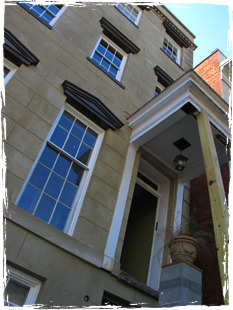 The 20 Finalists for the 2010 National Book Awards will be announced for the first time at the Flannery O'Connor Childhood Home in Savannah, Georgia this Wednesday, October 13. The home was selected from among more than 75 venue suggestions for the announcements.
The 20 Finalists for the 2010 National Book Awards will be announced for the first time at the Flannery O'Connor Childhood Home in Savannah, Georgia this Wednesday, October 13. The home was selected from among more than 75 venue suggestions for the announcements.
The Complete Stories by Flannery O'Connor won the National Book Award for Fiction in 1972 and was also voted the Best of the National Book Awards Fiction last fall. The author was born on March 25, 1925 and spent her first 13 years residing in the historic townhouse where the award finalists will be announced on Wednesday. Bordering Savannah's Lafayette Square, the historic home contains some of the family's original furnishings, including a crib and a child's tea table located in O'Connor's former bedroom. The two main floors of the home have been restored to their appearance at the the time the future scribe and her family occupied the residence.
O'Connor fans can also visit another of her former residences, known as Andalusia. Located in Milledgville, Georgia, 'Andalusia' was her mother's ancestral farm and the place where the author spent the last of her 39 years writing and raising peacocks, swans, chickens and other birds before succumbing to complications from lupus.








October 9, 2010
Remembering Poets Past
 A poetry extravaganza is taking place tomorrow, Sunday, October 10th, at 3:00 p.m. at the Robert Frost Farm in Derry, New Hampshire, as part of the nationwide celebrations for a brand new, literary-themed holiday — Dead Poets Remembrance Day. A dozen New Hampshire poets will read selections from the works of the state's bygone bards like Frost, Jane Kenyon, Odgen Nash, Robert Lowell, and Celia Thaxter.
A poetry extravaganza is taking place tomorrow, Sunday, October 10th, at 3:00 p.m. at the Robert Frost Farm in Derry, New Hampshire, as part of the nationwide celebrations for a brand new, literary-themed holiday — Dead Poets Remembrance Day. A dozen New Hampshire poets will read selections from the works of the state's bygone bards like Frost, Jane Kenyon, Odgen Nash, Robert Lowell, and Celia Thaxter.
Click here for more information about Dead Poets Remembrance Day and other events, and visit National Geographic Traveler magazine's Intelligent Travel blog for the back story on how Walter Skold (aka The Dead Poet Guy) came up with the idea for the unique holiday.








Joni Rendon's Blog
- Joni Rendon's profile
- 5 followers






